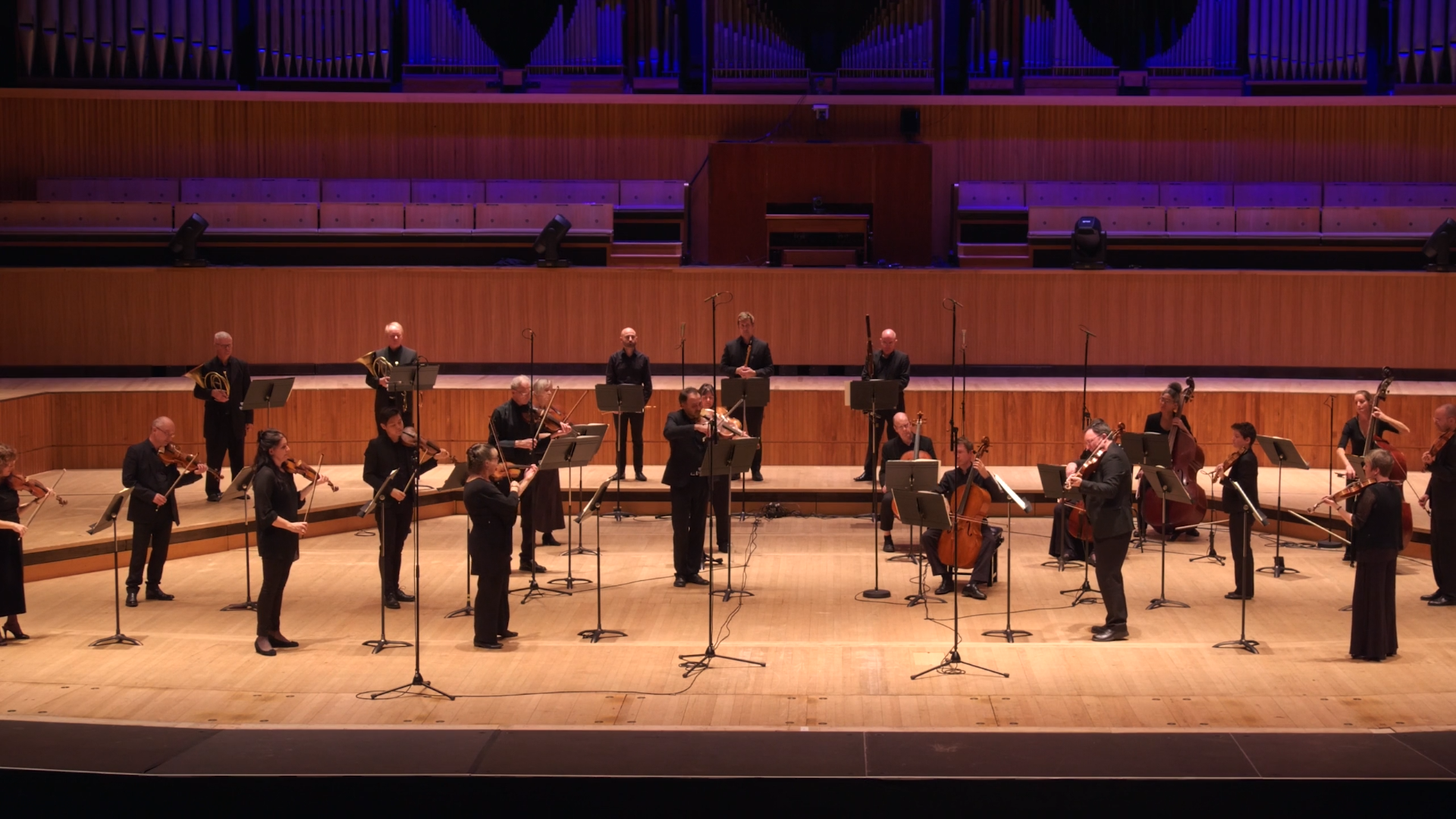
Ceremonies and the Quest for Light
The Orchestra of the Age of Enlightenment presents an all-Mozart programme including concert arias and ending with his 41st Symphony, ‘Jupiter’.
On 5 and 18 August 2021 the Orchestra of the Age of Enlightenment will present an all-Mozart programme including concert arias and ending with his 41st Symphony, ‘Jupiter’.
Below you can find out more about each of the works that they will be performing.
Don’t forget that if you can’t make it to the concerts in person, you can watch online via Marquee TV. This concert will be available from 4 July. Find out how to buy a season pass.

Light and darkness are the two duelling forces running through this all-Mozart concert. It’s an opposition felt keenly in this contrasting pair of orchestral works. While the Overture to Mozart’s Die Zauberflöte blazes with energy from its arresting opening chords, through the fizzing Allegro and the radiant, mathematical order of a fugue, the composer’s Masonic Funeral March is an altogether darker work – relishing the evocative gloom of its unusual instrumental forces.
Freemasonry is the thread uniting two pieces that both owe much to the brotherhood of which Mozart was a prominent member. The order’s symbolism is embedded throughout Die Zauberflöte, heard here in the insistence on the significant number three – emphasised in the Eb major key signature and the opening chords. While the Funeral Music, composed after the deaths of two of his lodge brothers, sees the composer at his most dignified and sombre. Basset-horns and a throaty contra-bassoon add a cavernous depth to the march, chorale and consoling finale of this elegant miniature.
Misera, dove son! K369
Bella mia fiamma, addio! K525
If Mozart’s operas offer a measure of the composer’s evolving genius, then his concert and insertion arias provide an even more vivid picture of the practical realities of life as a jobbing 18th-century composer. Requests from patrons or particular singers, arias produced for salon recital or to embellish an opera by a rival – the contexts are as varied as the pieces themselves.
Premiered in the same year as Le nozze di Figaro, Martin y Soler’s opera Il burbero di buon core (The Kind-Hearted Curmudgeon) may have disappeared from the repertoire, but the additional aria Mozart composed for its revival remains. ‘Vado, ma Dove?’ takes Lorenzo da Ponte’s text – the confusion of a woman unsure whether to follow her heart or not – and gives it a quietly tragic dignity in striking contrast to its essentially comic musical surroundings. The early ‘Misera! Dove son’ was composed for the Countess Josepha von Paumgarten – a 19-year-old amateur singer, whose skills must have been impressive if this elegant aria is anything to go by. Borrowing text from Metastasio’s Ezio, the aria introduces us to Fulvia who believes that her lover has been murdered with the collusion of her father. The tone of both recitative and aria is anguished but always controlled – we feel Fulvia’s desperation, but also her sense of duty and propriety even in extremis.
While composing and premiering Don Giovanni in Prague, Mozart stayed with friends Frnaz Xaver and Josepha Duschek. As a parting gift for his hostess he composed ‘Bella fiamma, addio!’ – a recitative and aria that share the opera’s chromatic intensity. Titano loves Proserpina, but her goddess mother Ceres orders Titano’s death. The hero laments his fate with dignity that always threatens to spill over into despair.

16 years and a world of experience divide Mozart’s Symphonies No. 16 and 41. The G major Symphony No. 16 was one of three he composed during a short span in 1772, aged just 16. Newly returned from an Italian tour, with the opera Mitridate, re di Ponto under his belt, he turned his attention once again to orchestral music.
Scored for pairs of oboes, horns and strings, the symphony is a graceful, classical affair. A forthright opening theme is answered by a gentler motif in the violins. The contrast between the two animates the concise Allegro. The C major slow movement is song-like and self-consciously simple, while the final movement is propelled by the horns, who introduce a rollicking hunting theme, which canters along pleasingly, often pursued by flurries of strings.
But if the G major symphony fulfils all classical expectations of structure and balance, Mozart’s final example of the genre throws them once again into question.
A glance at the C major key signature might suggest an uncomplicatedly sunny work. But the reality is far from it. The symphony’s first four bars, with their contrasting military and gently coaxing themes serve as a microcosm for a work that embraces as much breadth and depth and contradiction as possible in its broad and powerful reach. Not for nothing did 19th-century listeners nickname the work ‘Jupiter’.
The heroism of the brisk opening Allegro is tempered (not to say punctured) by a second subject taken from a pre-existing comic aria by Mozart – just when you think you have the measure of this music it wrong-foots you. The slow movement is also surprising – an orchestral song of startling ambiguity and range. The Minuet that follows sees the baroque ballroom invaded by a turbulent Romantic spirit, dance often forgotten or briefly abandoned when emotions become overpowering.
It’s a precursor to the final movement, where Mozart lands his most devastating blow on his predecessors. Baroque counterpoint offers what seems at first like a dignified, self- consciously ‘learned’ framework for a movement that proceeds at once to subvert and out-do tradition in in its monumental complexity and throwaway bravura, climaxing in a coda combining no fewer than five motifs in dazzling musical unity.
Written by Alexandra Coghlan, Glyndebourne’s opera content specialist
The concerts will also be available to watch online by buying a season pass from Marquee TV – find out more.
Image credits: OAE, photos by Zen Grisdale














